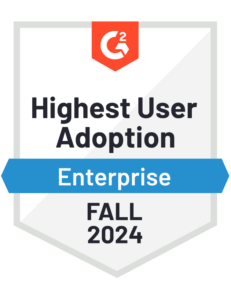4 Challenges Facing High-Volume Transaction Matching
Blog post
Share
High-volume transaction matching is a crucial part of completing reconciliations and ultimately can impact the overall efficiency of your monthly close. Because reconciliations form the foundation of the rest of their processes, many Finance and Accounting leaders choose high-volume transaction matching as a starting point for evolving their entire financial close. With automation, organizations become more efficient in completing transaction matching, reduce risks by managing exceptions, save costs and become more effective at increasing their match rate, all of which will help deliver accurate data for reporting.
The Challenges of Manually Matching Transactions
Challenge #1 – Data Management
When it comes to high-volume transaction matching, Finance and Accounting teams are traditionally tasked with manually managing large data sets. However, compiling data from multiple sources and performing reconciliations to find exception items often leaves Finance and Accounting teams with little time to analyze those exceptions. The time crunch of manually completing these tasks significantly impacts the reconciliations’ quality and can lead to a large number of write-offs at the period-end.
Instead of manually combing through and reconciling a high number of transactions, your team can utilize automation and exception management tools that do the work for them. Cadency Match establishes a standardized process that provides data enrichment and takes the stress off the Finance and Accounting teams. Having more time to focus on the cause of exceptions and how to resolve them improves the accuracy of reconciliations without compromising organizational controls.
“70% of high-volume transactions are matched automatically, freeing up time for the research and resolution of exceptions.” -Western & Southern Financial
Challenge #2 – Chasing and Tracking Outstanding Items
The burden of manually managing high-volume transactions is amplified when you’re tasked with chasing status updates and tracking outstanding items on multiple communication channels. While spreadsheets are the traditional way of documenting financial figures, complete with formulas and macros, they provide no clear way of tracking changes and standardizing layouts. This contributes to a lack of visibility and a high probability of errors — whether in the formulas or the transactions themselves.
With Cadency Match, Finance and Accounting teams are only presented with the exceptions that are automatically routed to the right person, with all communication tracked for visibility and quick resolution. Increased standardization and visibility take the pressure off the month-end close and reduce the risk of low matching rates or errors that could result in write-offs for the organization.
“Today, we auto-match 15,000 accounts which has saved us a total of 500 hours per month.” – Serco Group
Challenge #3 – High-Volume Transaction Rule-Setting
Combing through and matching high-volume transactions manually is a tedious task that causes burnout for Finance and Accounting teams as they rely on error-prone spreadsheets to document figures and find discrepancies.
Rather than manually matching each figure and finding the discrepancies, Finance and Accounting teams should utilize an automation solution to define and refine matching rules to highlight the inconsistencies, allowing them to focus their time on investigating them. The shift from manual tasks to automation enables better work-life balance and increases employee satisfaction, which greatly impacts the organization’s ability to attract and retain top talent.
“Today, we are loading about 100,000+ records and auto-reconcile over 90% of those intercompany reconciliations, which has been a significant win for us.” – LKQ Corporation
Challenge #4 – Integration with Balance Sheet Reconciliation Process
According to Trintech’s 2022 Benchmark Survey, balance sheet reconciliations and high-volume transaction matching were both processes that organizations were looking to automate further over the next 12 months. Without implementing a holistic solution that provides a control framework and standardization, the business has amplified risk, and Finance and Accounting teams have little room to provide critical business insights.
Automating high-volume transaction matching and account reconciliations with Cadency Match and Reconciliation Certify allows the processes to work together seamlessly to streamline the reconciliation process and significantly reduce manual effort leading to lower risk to the organization and a shorter time to close for Finance and Accounting teams so they can prioritize value-added analysis for the organization.
“Cadency offers complete visibility into the status of the closing activities by removing the use of spreadsheets and centralizing our monthly reconciliation process into a single tool.” – Ahold Delhaize
While changes may seem minor at first, continually fine-tuning and automating processes, such as high-volume transaction matching and account reconciliations, will reduce risk overall and empower Finance and Accounting teams to be strategic partners for the organization.
Written by: Lauren McCrohan






